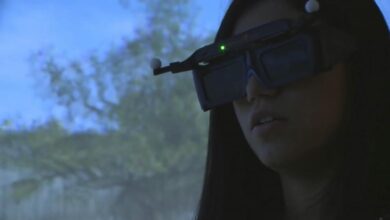
Unveiling the Intricacies: Key Factors That Influence the Shooting of 360-Degree Videos
In the dynamic realm of video production, the evolution of technology has paved the way for immersive experiences, with 360-degree videos standing at the forefront. These videos, capturing an all-encompassing view of the surroundings, offer viewers an unparalleled sense of presence. However, the creation of seamless and captivating 360-degree videos is not without its challenges. In this article, we delve into the crucial factors that may impact the shooting of 360-degree videos, shedding light on key considerations for videographers and content creators.
Understanding the Shooting Process
Shooting a 360-degree video involves capturing footage from all directions simultaneously, creating an immersive and interactive viewing experience. This process is facilitated by specialized cameras equipped with multiple lenses, enabling the capture of a complete panoramic scene. Despite the technological advancements in 360-degree video cameras, various factors can influence the quality and effectiveness of the final product.
Camera Quality and Calibration
The foundation of any successful 360-degree video lies in the quality of the camera used. Higher-resolution cameras with advanced lens technology contribute to sharper images and smoother transitions between frames. Additionally, proper calibration of the camera’s lenses is paramount to avoiding stitching errors and ensuring a seamless 360-degree viewing experience.
Lighting Conditions
Lighting plays a pivotal role in the overall quality of a video, and 360-degree videos are no exception. Inconsistent lighting conditions can result in uneven exposure and shadows, affecting the visual coherence of the footage. Videographers must carefully consider the placement of light sources and adapt to changing natural light when shooting outdoors.
Stabilization Techniques
Maintaining stability during the shooting process is crucial to avoid nausea-inducing motion for viewers. Utilizing stabilizers, tripods, or specialized rigs can help minimize camera shake and ensure a smoother viewing experience. Advanced stabilization technologies within 360-degree cameras can also play a significant role in enhancing the final output.
Optimal Shooting Locations
Selecting the right location is a strategic decision that significantly impacts the narrative and visual appeal of a 360-degree video. Consideration must be given to the surroundings, potential distractions, and the overall atmosphere. Shooting in environments with visually interesting elements enhances the immersive nature of the video.
Audio Capture and Ambisonic Sound
Immersive audio is as critical as visual elements in 360-degree videos. The incorporation of ambisonic microphones allows for the capture of spatial audio, providing viewers with a more authentic and immersive experience. Effective sound design enhances the sense of presence and engagement within the virtual environment.
Post-Production Techniques
The magic of 360-degree video often takes shape during post-production. Skillful stitching of footage from multiple lenses, color correction, and the integration of visual effects contribute to the final polished product. Choosing the right editing software and mastering the intricacies of 360-degree video editing are essential for achieving professional results.
Audience Engagement and Interaction
Understanding the target audience and their expectations is vital when shooting 360-degree videos. Consideration should be given to the intended level of viewer interaction, whether through interactive elements within the video or integration with virtual reality (VR) platforms. Creating content that resonates with the audience enhances the overall impact of the video.
Conclusion
The shooting of 360-degree videos is a multifaceted process that requires a nuanced approach and attention to detail. From the quality of the camera equipment to the intricacies of post-production, each factor plays a pivotal role in shaping the final immersive experience for viewers. By navigating the challenges posed by camera calibration, lighting conditions, stabilization, optimal shooting locations, audio capture, and post-production techniques, videographers can elevate the quality of their 360-degree videos and transport audiences to new dimensions of visual storytelling. As technology continues to advance, staying abreast of these factors will empower content creators to push the boundaries of creativity in the exciting realm of 360-degree video production.



